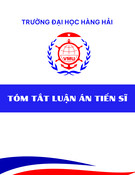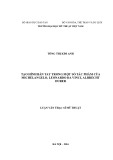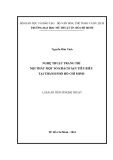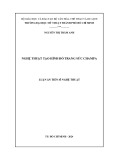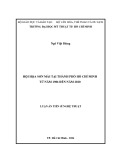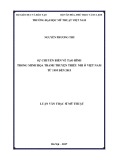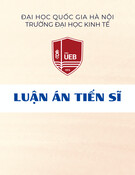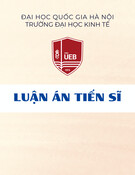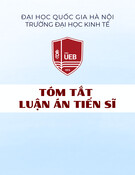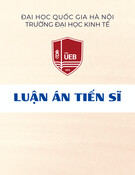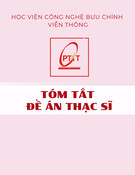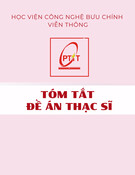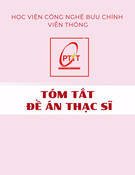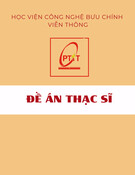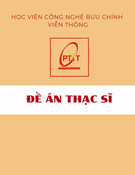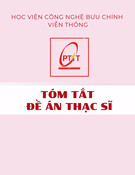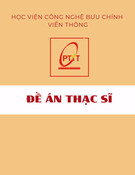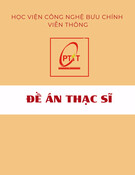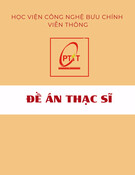
Annals of Mathematics
Geometric Langlands duality and
representations of algebraic
groups over commutative rings
By I. Mirkovi´c and K. Vilonen*

Annals of Mathematics,166 (2007), 95–143
Geometric Langlands duality and
representations of algebraic groups
over commutative rings
By I. Mirkovi´
cand K. Vilonen*
1. Introduction
In this paper we give a geometric version of the Satake isomorphism [Sat].
As such, it can be viewed as a first step in the geometric Langlands program.
The connected complex reductive groups have a combinatorial classification
by their root data. In the root datum the roots and the co-roots appear in
a symmetric manner and so the connected reductive algebraic groups come
in pairs. If Gis a reductive group, we write ˇ
Gfor its companion and call
it the dual group G. The notion of the dual group itself does not appear in
Satake’s paper, but was introduced by Langlands, together with its various
elaborations, in [L1], [L2] and is a cornerstone of the Langlands program. It
also appeared later in physics [MO], [GNO]. In this paper we discuss the basic
relationship between Gand ˇ
G.
We begin with a reductive Gand consider the affine Grassmannian Gr,
the Grassmannian for the loop group of G. For technical reasons we work
with formal algebraic loops. The affine Grassmannian is an infinite dimen-
sional complex space. We consider a certain category of sheaves, the spherical
perverse sheaves, on Gr. These sheaves can be multiplied using a convolution
product and this leads to a rather explicit construction of a Hopf algebra, by
what has come to be known as Tannakian formalism.
The resulting Hopf algebra turns out to be the ring of functions on ˇ
G.
In this interpretation, the spherical perverse sheaves on the affine Grassman-
nian correspond to finite dimensional complex representations of ˇ
G. Thus,
instead of defining ˇ
Gin terms of the classification of reductive groups, we pro-
vide a canonical construction of ˇ
G, starting from G. We can carry out our
construction over the integers. The spherical perverse sheaves are then those
with integral coefficients, but the Grassmannian remains a complex algebraic
object.
*I. Mirkovi´c and K. Vilonen were supported by NSF and the DARPA grant HR0011-04-
1-0031.

96 I. MIRKOVI´
C AND K. VILONEN
The resulting ˇ
Gturns out to be the Chevalley scheme over the integers,
i.e., the unique split reductive group scheme whose root datum coincides with
that of the complex ˇ
G. Thus, our result can also be viewed as providing an ex-
plicit construction of the Chevalley scheme. Once we have a construction over
the integers, we have one for every commutative ring and in particular for all
fields. This provides another way of viewing our result: it provides a geometric
interpretation of representation theory of algebraic groups over arbitrary rings.
The change of rings on the representation theoretic side corresponds to change
of coefficients of perverse sheaves, familiar from the universal coefficient the-
orem in algebraic topology. Note that for us it is crucial that we first prove
our result for the integers (or p-adic integers) and then deduce the theorem for
fields (of positive characteristic). We do not know how to argue the case of
fields of positive characteristic directly.
One of the key technical points of this paper is the construction of certain
algebraic cycles that turn out to give a basis, even over the integers, of the
cohomology of the standard sheaves on the affine Grassmannian. This result
is new even over the complex numbers. These cycles are obtained by utiliz-
ing semi-infinite Schubert cells in the affine Grassmannian. The semi-infinite
Schubert cells can then be viewed as providing a perverse cell decomposition
of the affine Grassmannian analogous to a cell decomposition for ordinary ho-
mology where the dimensions of all the cells have the same parity. The idea of
searching for such a cell decomposition came from trying to find the analogues
of the basic sets of [GM] in our situation.
The first work in the direction of geometrizing the Satake isomorphism
is [Lu] where Lusztig introduces the key notions and proves the result in the
characteristic zero case on a combinatorial level of affine Hecke algebras. Inde-
pendently, Drinfeld had understood that geometrizing the Satake isomorphism
is crucial for formulating the geometric Langlands correspondence. Following
Drinfeld’s suggestion, Ginzburg in [Gi], using [Lu], treated the characteristic
zero case of the geometric Satake isomorphism. Our paper is self-contained
in that it does not rely on [Lu] or [Gi] and provides some improvements and
precision even in the characteristic zero case. However, we make crucial use
of an idea of Drinfeld, going back to around 1990. He discovered an elegant
way of obtaining the commutativity constraint by interpreting the convolution
product of sheaves as a “fusion” product.
We now give a more precise version of our result. Let Gbe a reduc-
tive algebraic group over the complex numbers. We write GOfor the group
scheme G(C[[z]]) and Gr for the affine Grassmannian of G(C((z)))/G(C[[z]]);
the affine Grassmannian is an ind-scheme, i.e., a direct limit of schemes. Let
kbe a Noetherian, commutative unital ring of finite global dimension. One
can imagine kto be C,Z,orFq, for example. Let us write PGO(Gr,k) for the
category of GO-equivariant perverse sheaves with k-coefficients. Furthermore,

LANGLANDS DUALITY AND ALGEBRAIC GROUPS] 97
let Rep ˇ
Gkstand for the category of k-representations of ˇ
G
k
; here ˇ
G
k
denotes
the canonical smooth split reductive group scheme over kwhose root datum
is dual to that of G.
The goal of this paper is to prove the following:
(1.1) The categories PGO(Gr,k) and Rep ˇ
Gkare equivalent as tensor categories.
We do slightly more than this. We give a canonical construction of the group
scheme ˇ
G
k
in terms of PGO(Gr,k). In particular, we give a canonical construc-
tion of the Chevalley group scheme ˇ
G
Z
in terms of the complex group G. This
is one way to view our theorem. We can also view it as giving a geometric
interpretation of representation theory of algebraic groups over commutative
rings. Although our results yield an interpretation of representation theory
over arbitrary commutative rings, note that on the geometric side we work
over the complex numbers and use the classical topology. The advantage of
the classical topology is that one can work with sheaves with coefficients in
arbitrary commutative rings, in particular, we can use integer coefficients. Fi-
nally, our work can be viewed as providing the unramified local geometric
Langlands correspondence. In this context it is crucial that one works on the
geometric side also over fields other than C; this is easily done as the affine
Grassmannian can be defined even over the integers. The modifications needed
to do so are explained in Section 14. This can then be used to define the notion
of a Hecke eigensheaf in the generality of arbitrary systems of coefficients.
We describe the contents of the paper briefly. Section 2 is devoted to the
basic definitions involving the affine Grassmannian and the notion of perverse
sheaves that we adopt. In Section 3 we introduce our main tool, the weight
functors. In this section we also give our crucial dimension estimates, use them
to prove the exactness of the weight functors, and, finally, we decompose the
global cohomology functor into a direct sum of the weight functors. The next
Section 4 is devoted to putting a tensor structure on the category PGO(Gr,k);
here, again, we make use of the dimension estimates of the previous section.
In Section 5 we give, using the Beilinson-Drinfeld Grassmannian, a commu-
tativity constraint on the tensor structure. In Section 6 we show that global
cohomology is a tensor functor and we also show that it is tensor functor in
the weighted sense. Section 7 is devoted to the simpler case when kis a field of
characteristic zero. Next, Section 8 treats standard sheaves and we show that
their cohomology is given by specific algebraic cycles which provide a canoni-
cal basis for the cohomology. In the next Section, 9, we prove that the weight
functors introduced in Section 3 are representable. This, then, will provide us
with a supply of projective objects. In Section 10 we study the structure of
these projectives and prove that they have filtrations whose associated graded
consists of standard sheaves. In Section 11 we show that PGO(Gr,k) is equiv-
alent, as a tensor category, to Rep ˜
Gkfor some group scheme ˜
G
k
. Then, in the

98 I. MIRKOVI´
C AND K. VILONEN
next Section 12, we identify ˜
G
k
with ˇ
G
k
. A crucial ingredient in this section
is the work of Prasad and Yu [PY]. We then briefly discuss in Section 13 our
results from the point of view of representation theory. In the final Section 14
we briefly indicate how our arguments have to be modified to work in the ´etale
topology.
Most of the results in this paper appeared in the announcement [MiV2].
Since our announcement was published, the papers [Br] and [Na] have ap-
peared. Certain technical points that are necessary for us are treated in these
papers. Instead of repeating the discussion here, we have chosen to refer to
[Br] and [Na] instead. Finally, let us note that we have not managed to carry
out the idea of proof proposed in [MiV2] for Theorem 12.1 (Theorem 6.2 in
[MiV2]) and thus the paper [MiV2] should be considered incomplete. In this
paper, as was mentioned above, we will appeal to [PY] to prove Theorem 12.1.
We thank the MPI in Bonn, where some of this research was carried out.
We also want to thank A. Beilinson, V. Drinfeld, and D. Nadler for many
helpful discussions and KV wants to thank G. Prasad and J. Yu for answering
a question in the form of the paper [PY].
2. Perverse sheaves on the affine Grassmannian
We begin this section by recalling the construction and the basic properties
of the affine Grassmannian Gr. For proofs of these facts we refer to §4.5 of [BD].
See also, [BL1] and [BL2]. Then we introduce the main object of study, the
category PGO(Gr,k) of equivariant perverse sheaves on Gr.
Let Gbe a complex, connected, reductive algebraic group. We write Ofor
the formal power series ring C[[z]] and Kfor its fraction field C((z)). Let G(K)
and G(O) denote, as usual, the sets of the K-valued and the
O-valued points of G, respectively. The affine Grassmannian is defined as the
quotient G(K)/G(O). The sets G(K) and G(O), and the quotient G(K)/G(O)
have an algebraic structure over the complex numbers. The space G(O) has
a structure of a group scheme, denoted by GO, over Cand the spaces G(K)
and G(K)/G(O) have structures of ind-schemes which we denote by GKand
Gr=GrG, respectively. For us an ind-scheme means a direct limit of fam-
ily of schemes where all the maps are closed embeddings. The morphism
π:GK→Gr is locally trivial in the Zariski topology; i.e., there exists a Zariski
open subset U⊂Gr such that π−1(U)∼
=U×GOand πrestricted to U×GO
is simply projection to the first factor. For details see for example [BL1], [LS].
We write Gr as a limit
Gr = lim
−→ Grn,(2.1)
where the Grnare finite dimensional schemes which are GO-invariant. The
group GOacts on the Grnvia a finite dimensional quotient.

